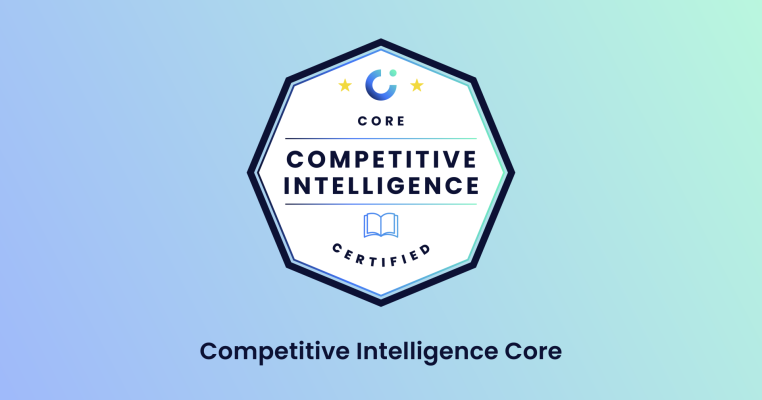Have you ever wondered what sets market leaders apart from their competitors?
It's simple - more often than not, they're dedicated to identifying and solving their customers' unmet needs. By understanding the unaddressed frustrations and desires of their customers, these companies gain an advantage that helps them out-innovate their rivals.
This guide is here to help you understand how to map unmet needs across your industry – and use those insights to develop strategies that will keep you miles ahead of the competition.
Let's dive in and get started! 🤿
What are unmet needs?
We've all been there – feeling frustrated with a product or service that just doesn't quite tick all the boxes. Maybe it lacks certain features you wish it had. Or perhaps it's just not delivering the level of convenience or performance you were hoping for.
These niggling problems are what we call “unmet needs”. Basically, they're those desires, or pain points that existing products and services aren't adequately fulfilling for customers.
Unmet needs can be varied – from practical needs like better functionality and reliability, to more emotional needs around things like:
- User experience,
- Empathy from customer service,
- And overall convenience.
The key point is: that wherever these unmet needs exist in the market, that's an opportunity. For the smart, customer-focused company, identifying and addressing those underserved needs is the golden ticket to winning over new clients, keeping existing customers happy, and gaining an edge over the competition.
So, as a competitive intelligence pro, getting laser-focused on unmet needs has to be high on your priority list. Pinpointing those gaps where customers aren't getting what they want is how you uncover make-or-break insights to feed back into your company strategy.
How to identify unmet customer needs
Uncovering those gaps where customers' needs aren't being met is no walk in the park. It takes proactive research and analysis using a variety of methods.
The good news?
We’ve got some tried-and-true techniques to help you get those valuable insights.
1 - Focus groups
Sometimes you just have to go straight to the source – your customers themselves.
Focus groups allow you to have open, candid discussions with a sample of your target audience. Listen closely as they share what frustrates them about current products, or what features they wish existed. This unfiltered feedback can be a goldmine for identifying unmet needs.
2 - Social media listening
These days, your customers are taking to social channels like X and Reddit, and ranting about products that disappoint them.
Monitor relevant hashtags and brand mentions. If you see recurring complaints about missing features or poor user experiences, bingo – you've pinpointed an unmet need to explore.
3 - Keyword research
Just like the rest of us, when customers have an unsolved problem or desire, they typically turn to their trusty friend, Google. The keywords and phrases they use can clue you into what their needs are. So, you’ll want to add tools like Google Trends and SEMrush to your customer research toolbox.
If top-ranking keywords suggest needs that current products aren't addressing, that could represent a prime opportunity to shine.
4 - Customer surveys
Survey your customer base about their awareness of competitors, brand perceptions, product satisfaction, and more. Their responses can help you understand where your offering may be falling short of their needs compared to alternatives. Just be sure to choose your questions carefully, and include open-ended questions to uncover as much detail as possible.
5 - Means-end analysis
Once you have survey data, perform a means-end analysis to discover the reasons why a customer would buy your product. Are they prioritizing certain features or benefits over others that could signify unmet needs? Means-end analysis can provide those insights.
Examples of unmet needs
The list of possible unmet customer needs is endless. We’ve outlined the main types below and divided them into two categories: product needs and service needs – take a look!
Product needs
1 - Functionality
Customers won't settle for products that only partially solve their problems. They expect solutions that check all the boxes and get the whole job done – and done right. If existing products are lacking must-have features or key capabilities, that represents a functionality gap just waiting to be filled.
2 - Price
Buyers have budgets they can't exceed, no matter how valuable a product seems. If a solution's pricing structure doesn't align with what customers can realistically afford, that price point itself is an unmet need. Common causes for this include rigid packaging with limited options or overpricing in comparison to the product's value.
3 - Compatibility
B2B customers in particular need products that integrate seamlessly into their existing tech stack and workflow. If a solution doesn’t mesh well with the other tools and platforms a customer uses, they're going to feel that friction. Lack of interoperability and connectivity is a prime unmet need to jump on.
4 - Performance
There's no room for excuses - customers expect products to perform as advertised. If an existing solution is buggy, slow, unstable or just doesn't efficiently get the job done, that subpar performance represents an unmet need. Buyers won't settle for underwhelming solutions.
5 - User experience
No matter how powerful a product is under the hood, if it's actually difficult to use due to confusing UI, poor design flows, or lack of intuitiveness, the overall user experience is an unmet need. Seamless, intuitive experiences are table stakes nowadays.
6 - Convenience
If customers wanted to jump through hoops, they’d have joined the circus. Above all, they want things to be easy and convenient. By offering straightforward, practical solutions, you can make their lives a lot easier and win their eternal gratitude.

Service needs
1 - Touchpoints
Customers today expect to be able to reach out on their preferred channels and get through to a human. Having to constantly navigate phone trees and pre-recorded messages is a sure way to create an unmet need. You can address this need by providing multiple easy touchpoints – phone, chat, email, social media, and more.
2 - Empathy
When customers contact support, it's because they have an issue that needs resolving. A lack of empathy and understanding from support reps who seem indifferent or impatient is a major unmet need.
Customers expect helpful and caring service. If your competitors aren’t providing that, you’ve got a golden opportunity to differentiate.
3 - Fairness
Nobody likes being ripped off. Ever.
Misleading pricing, confusing contracts, sneaky fees – anything that makes customers feel nickeled-and-dimed or taken advantage of qualifies as an unmet need around fairness. Transparency in all policies and transactions is essential to fostering trust – and can be a great way to stand out from the crowd.
4 - Clarity
Customers hate being left in the dark, whether it's about an upcoming price change, policy update, or any other key info. A lack of proactive, crystal-clear communication inevitably leads to an unmet need. You can meet this need through newsletters, in-app notifications, or more hands-on interventions from customer success teams.
5 - Control
Modern customers want to feel empowered. Restrictive policies that limit flexibility – like the inability to easily return items or make changes to their subscription – breed an unmet need for more autonomy and control. If your rivals are rigid, you can differentiate by providing customers with more flexibility.
6 - Information
When customers don’t have the info they need to make fully informed purchase decisions or get maximum value from a product, that’s an unmet need around education and enablement. Savvy brands can meet this need by providing robust content like guides, videos, and support docs to empower customers.

How to use unmet needs to build a winning competitive strategy
With the right strategy, you can turn customers’ unmet needs into a competitive advantage for your company. Here’s a step-by-step guide to get you started.
Step one: Uncover market opportunities
Comprehensively mapping unmet needs across your market lets you identify opportunities competitors are missing.
Maybe your rivals are failing to address customer needs that your company is already handling – awesome! Pass that intel on to your product marketing colleagues so they can work it into your positioning.
Or perhaps there are unmet needs that no company, including yours, adequately solves yet – those white spaces represent potential openings to disrupt.
Step two: Identify your own gaps
Be brutally honest in assessing weaknesses in your product and service portfolio. Are there areas where you're not hitting the mark? Understanding the needs you’re not meeting allows you to get ahead of issues before competitors outflank you.
Step three: Refine your product roadmap
Your product roadmap should be a direct reflection of the unmet customer needs you aim to address. So, work with your product management leaders to analyze your research on unmet needs and ensure your roadmap prioritizes solving the most critical frustrations, desires and pain points customers face. Proactively shoring up those weak points is key to getting ahead.
Step four: Optimize customer experiences
As we’ve seen, unmet needs don’t only pop up in products and features – you can find them all around the customer experience too, in areas like support, education, transparency, and more.
Are customer support tickets taking too long to resolve? Make sure your head of customer success is in the know. Don't overlook service-oriented gaps. They open up a prime opportunity for you to team up with customer success leaders and rethink your processes, enablement, and overall engagement model through the lens of unmet needs.
Onwards, to competitive differentiation!
Putting unmet needs at the core of your competitive strategy is a powerful way to get ahead. When you're maniacally focused on identifying and filling those gaps, positioning your company as the audience-centric disruptor happens almost automatically.
Your products will be purposefully solving the problems customers truly care about, and your customer success engine will be firing on all cylinders to deliver experiences competitors can't match. That's when you've got a complete, unmet needs-driven strategy for blowing away the competition and delighting your audience.
So, absorb those unmet needs insights like a sponge, collaborate across teams, and start building winning product portfolios and world-class customer experiences. That's how you'll cement your position as the company that just “gets it” when it comes to what modern customers truly want and need.
Give yourself an unfair advantage
Our newest competitive intelligence course lifts the lid on the frameworks and processes experts use to deliver impactful intel with confidence.
You can expect:
- A 100% self-paced and online course packed with competitive wisdom so you can stop worrying and start winning.
- Bonus features from established competitive professionals to give you an unfair advantage.
- 6 downloadable, customizable templates and frameworks that make analysis a cinch.

Competitive Intelligence: Core
We'll show you how to:
- 👑 Lead development of your org’s all-important competitive positioning.
- 🦾 Master CI’s essentials, including its most powerful research techniques.
- 🚀 Arm sales and customer success with intel to skyrocket win rates and turn down churn.
- 🧠 Offer leaders critical intel that informs their decision-making and strategy.
- 📈 Elevate CI’s role within your org to ensure career progression.






.png?v=bdb44a2121)